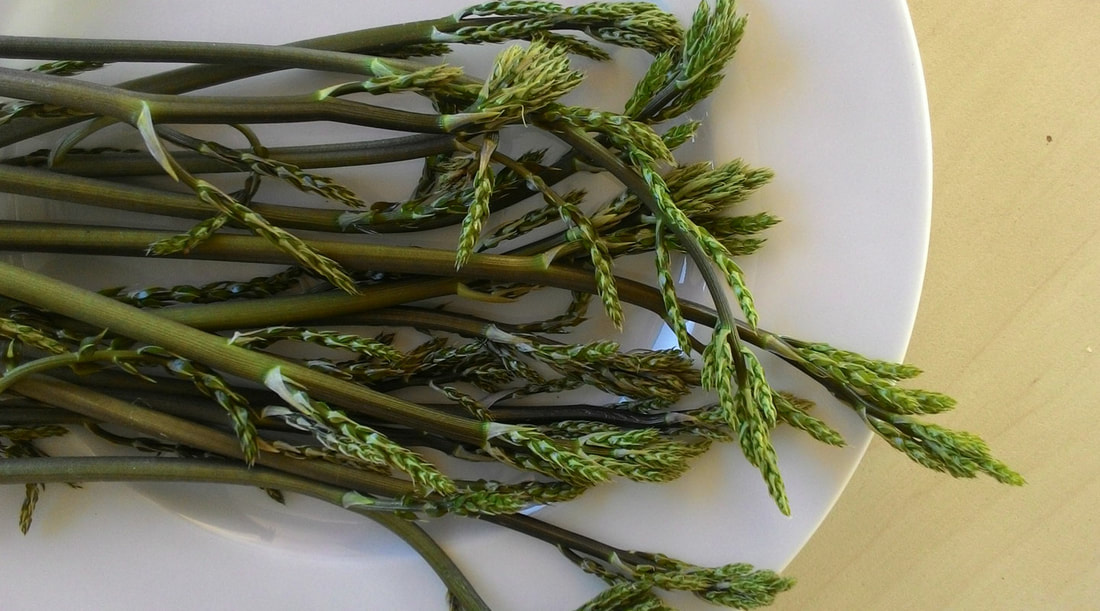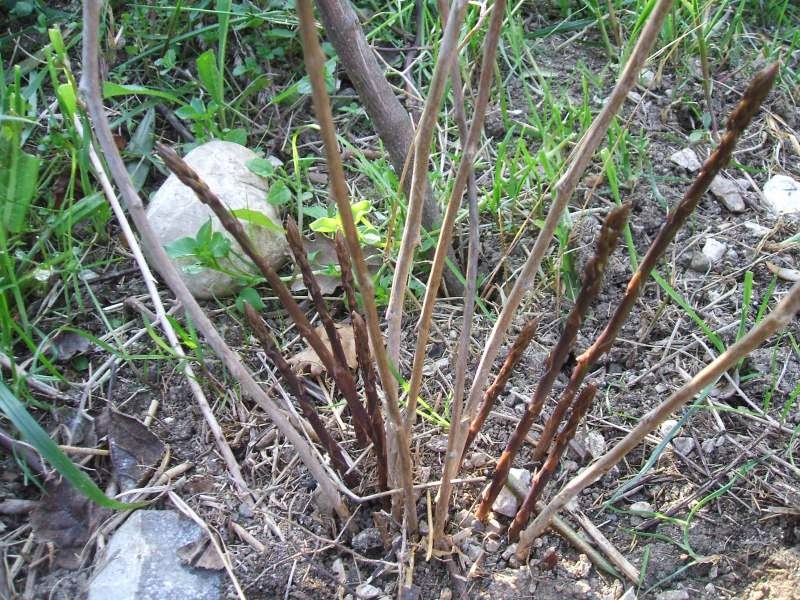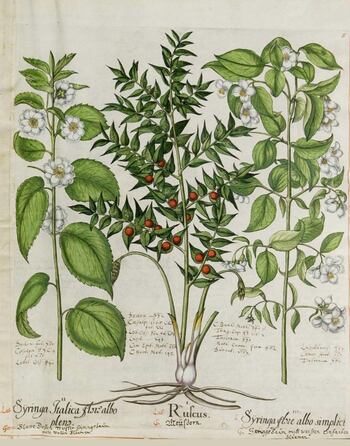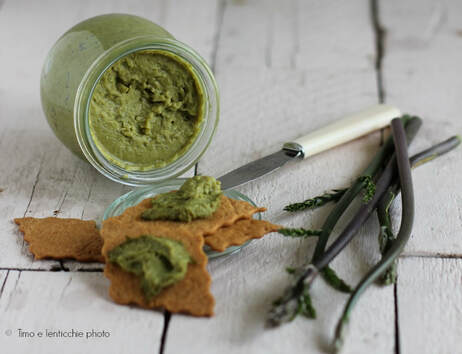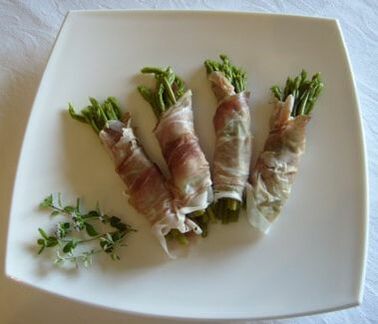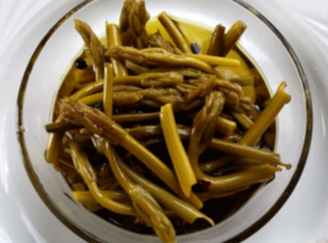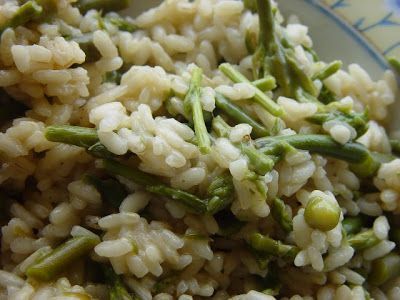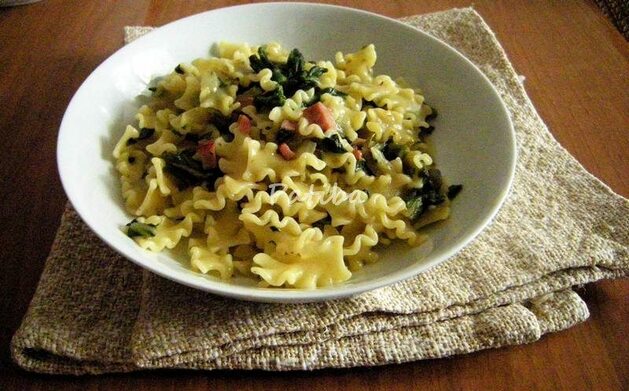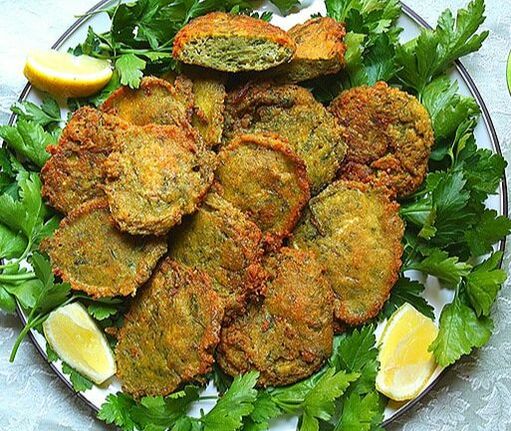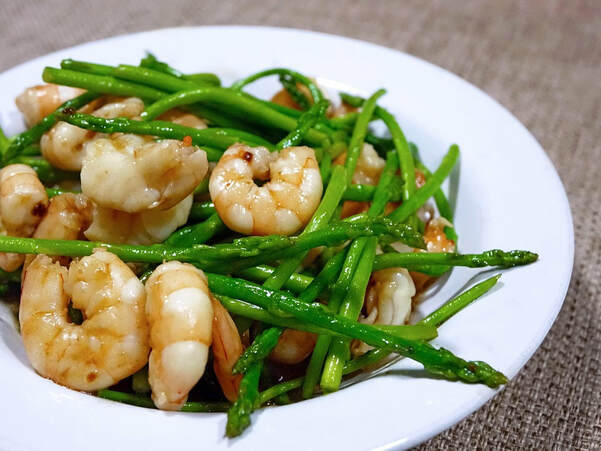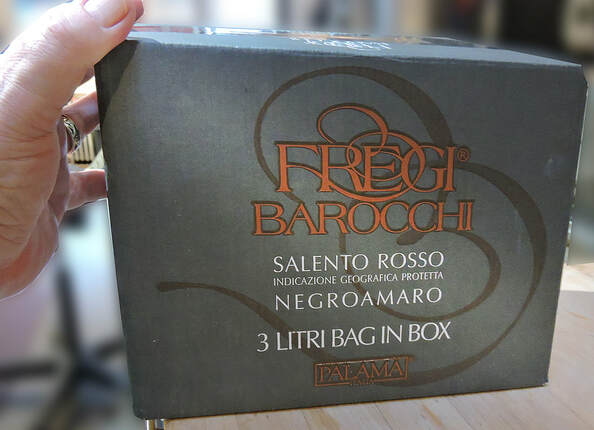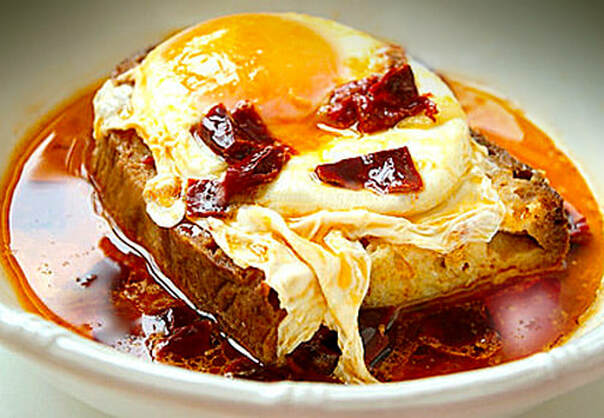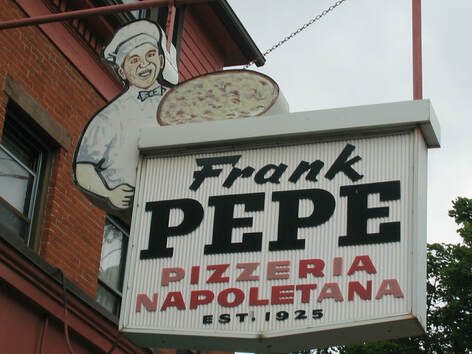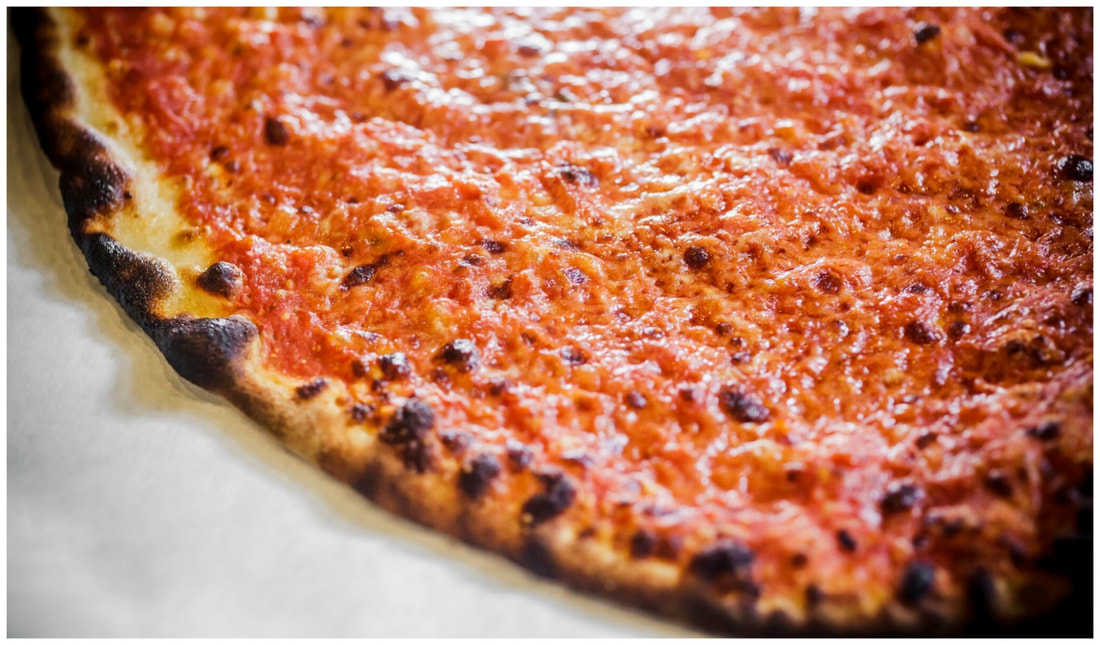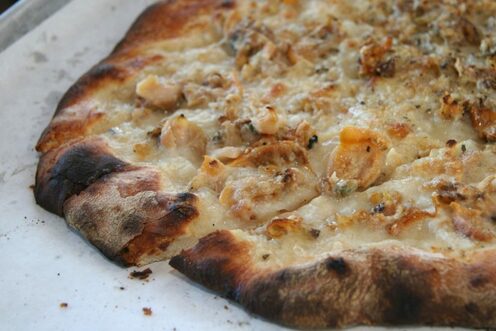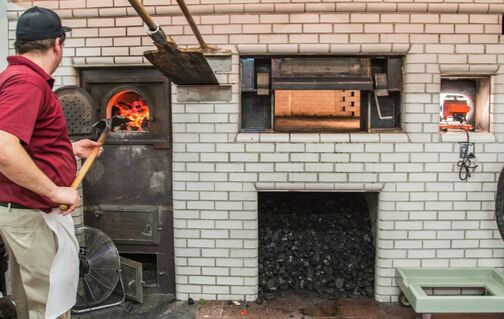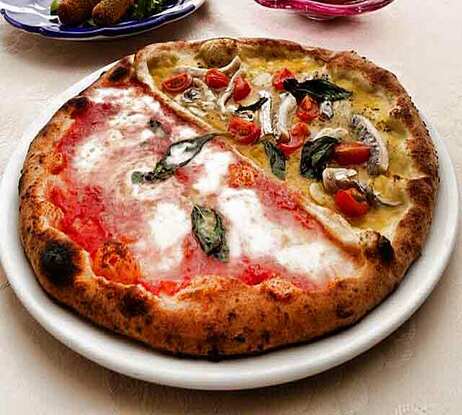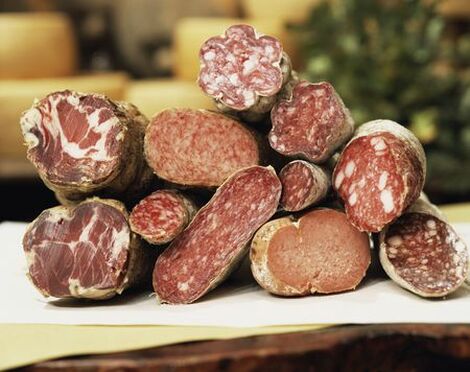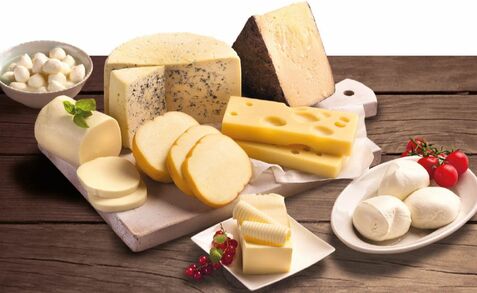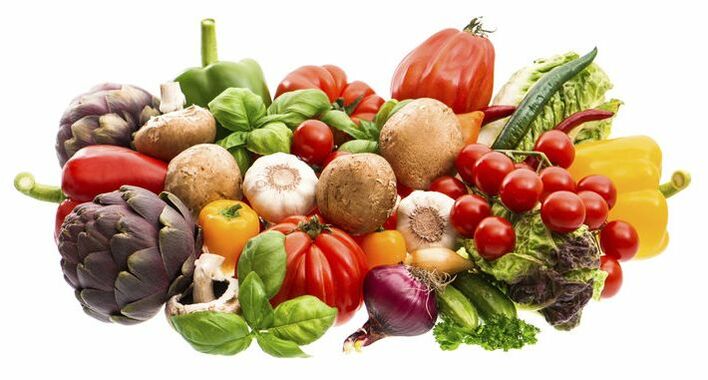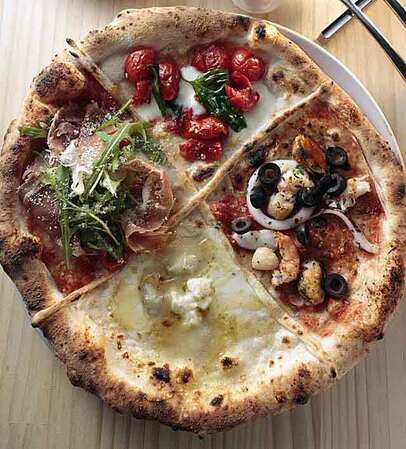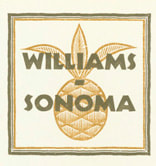|
Pungitopo (also known as Butcher's Broom) might be a popular plant for use in natural healing remedies, but it is often found while hiking in the mountains of Italy for use in local, traditional Italian recipes. Pungitopo tends to grow wild as an evergreen bush (looking like a short, bushy holly) with asparagus-like sprouts in fall. It is gathered in bunches about 12" tall and used in la cucina in the same was as asparagus. Tied with string and steamed until tender, it's often eaten as a side dish or wrapped in prosciutto, The sprouts, called ruscli (rusculins in English) are the tenderest part. Pungitopo is actually a member of the lily family closely related to asparagus botanically speaking. It and was once used in Europe make small brooms to clean butchers' chopping blocks. It's scent had the ability deter rodents from taking an interest in meats hanging to cure. The plant is well known throughout Italy, Europe and to the British Isles. Other common names are jew’s myrtle, sweet broom, kneeholy, pettigree, knee holly, kneeholm. In Italy, they will also be known as asparagi selvatici (wild asparagus) or portafortuna natalizio (Christmas Luck), referring to the time of year it is usually enjoyed in the Italian kitchen. It is mostly harvested nowadays for its thick, brown rhizome, which is harvested in the fall when the plant stores most of its energy for winter. It's herbal use is to make healing teas. There use can be as simple as boiling or steaming and served with butter or olive oil, the was asparagus are served. The softer buds are used in fritatta, frittella (fritters), risotto or in pasta dishes. Their taste is bitter but the buds alone are a bit sweeter. Here are a few ideas...
--GVI 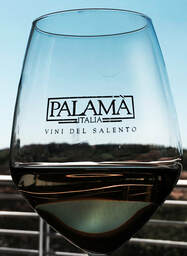 I was shocked when my wife Lisa unpacked the new shipment of wines and saw a boxed wine--Fregi Barocchi's Salento Rosso from Palama Vineyards. I mean, I'm anything but a wine snob, but the few times I've had to swallow boxed wines at friends' homes I wasn't the least bit impressed. But, OK, she had spent the amazingly low sum of $25 for three liters, so I thought I'd give it a quick sniff, swill and spit and while exile the remaining contents to our kitchen sink's drain. But wait a second... (sniff). is that clover I smell? (Sniff... sniff). Is that cinnamon? Apple slices? I could swear I smell honey... and hay... and a touch of rosemary? Now to taste. Surely tasting the stuff is going to prove that this box has been in the heat of a container on a ship for Lord knows how long.... I expected vinegar but what I got was nectar! We've been in love with wines from Puglia ever since we Voyaged there and sampled great wines throughout the region. I don't think we ever had a bad bottle--even cheap, €4 bottles from local alimentari. We loved them so much that we always have a stock on hand (especially Primativo). And they are affordable here in the States, too. I don't think we've ever paid more than $20 for a bottle from Puglia. But a boxed wine... 3 liters for under $25? How can this be SO good!? 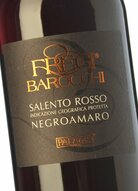 The Palamà family vineyard was founded by Arcangelo Palamà in 1936. A family of Greek origins, they settled in Italia about two thousand years ago, and have been making wine ever since. For 70 years had only sold their wine in their restaurant–until Small Vineyards (a specialty wine importer) came knocking on their door. The current winemaker is Ninì Palamà, son of Arcangelo, a larger than life character who will burst into song without notice, a man with a lust for life--and wine. His wines are full-bodied, intense and often spicy, like the Salento Rosso (also available in bottles). His wines capture the climate, sold and everything gown in fertile and dry Puglia. There is also an elegance in his wines that is becoming more and more common with Pugliese wines. Apulia has had a Renaissance or sorts since the post war period. Due to his estate’s proximity to the sea, the value of Southern coastal reds is that they pair as readily with seafood as they will with hearty meats. For us, this amazing boxed masterpiece paired well with pizza, a rich Ragu alla Bolognese and even risotto. We can't recommend this wine highly enough--even though it pours out of a silver Mylar bladder stuffed inside that box. Oh, and if you are a bit of a wine snob, no worry... it's also available it very presentable bottles. --Jerry Finzi --Buy it at Astor Wines Acquasala (or Acquasale, Acqua Sala) is one of the cucina povera--poor dishes--of southern Italy, especially in the Lucane Dolomites of Basilicata and olive oil rich Puglia. this simple fare was enjoyed by farmers and shepherds. Its close cousin is panzanella, a sort of salad that uses torn up pieces of stale bread reconstituted with water as its base. Acquasala is a dish made from the simplest ingredients that any peasant contadina had around: eggs, onion, water, peppers or tomatoes and especially, the stale bread. Think of it as a mashup between eggs Benedict and an Italian broth, where the broth replaces the Hollandaise sauce. Perfect for breakfast, brunch or even a light dinner. 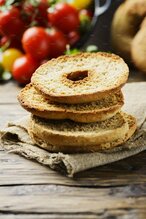 Friselli Friselli In it's simplest form, an acquasala is stale, crusty bread topped with a poached egg and a flavored broth poured over. The bread soaks up the resulting broth and its flavors. I'm certain that others in southern Italy might replace the stale bread with Friselli, a bagel-shaped, bone-dry toasted bread sold in bags in southern Italy. One easy to find bread nowadays is the ciabatta, left to go a bt stale or with the thick slices toasted before use. Don't think of this recipe as being ironclad in terms of the ingredients. Be creative. This is cucina povera, after all, which means that cooks used what they had on hand depending on the season: eggs from their chickens, stale bread, tomatoes, peppers, asparagus, eggplant, zucchini, white or red onions, a bit of garlic, mushrooms and greens. Southerners loved their greens, whether a bit of dandilion, arugla or chives. To be absolutely authentic, warm water (not boiled) is traditionally used to make the "broth", with the peppers and onions added to it for a light fusion of flavors. In Puglia it's often made without eggs and many more more ingredients, a cross between a soup and a salad. 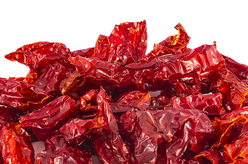 Pepperone Crusco Pepperone Crusco Acquasala Lucan Ingredients (serves 2, with one egg each)
Directions
Boun appetito! --Jerry Finzi Pugliese Acquasala... Copyright 2019, Jerry Finzi/GrandVoyageitaly.com - All Rights Reserved
Not to be published without expressed authorization Frank Pepe Pizzeria Napoletana is one of the oldest and best-known pizzerias in the United States. Known by locals as simply Pepe’s, its original location is in the Wooster Square neighborhood of New Haven, CT.  This Connecticut landmark pizzeria was founded in 1925 by Frank Pepe, born in the Amalfi Coast town of Maiori in 1893. As a poor, illiterate immigrant, he came to the U.S. when he was 16 years old and managed to get a job at a New Haven factory until World War I broke out when he returned to his homeland to fight in defense of Italy. After the war he married Filomena Volpi in Maiori and returned to America to start their new lives. Frank at first worked for Genneroso Muro's macaroni shop and next for Bread baker, Tony Apicella where he fell in love with and learned the art of making bread. Once he had learned the art of bread-making, he opened his own bakery at the original Wooster Street location where Frank Pepe’s the Spot (operated by the Boccamiello family) sits today. At first he started delivering bread to his customers, but because of his lack of reading and writing skills, he found it difficult to keep the addresses in order. What to do? Invent a business where the customers come to you. His wife Filomena had learned to read and write which helped enormously for their next adventure... in 1925 they decided to start making something very new to Americans--Pizza! The local Italian-Americans, still today, call it "ah-BEETZ". They offered two types: Tomato Pie with grated cheese, garlic, oregano and olive oil and a second with anchovy. Their "Original Tomato Pie" is still offered at the 157 Wooster Street location, as well as at the others. Keep in mind, however, Pepe's Tomato Pie is thin-crusted and round, very unlike the Philadephia/Trenton are Tomato Pie which is thick, bready and square.  Frank Pepe originated the New Haven-style, thin crust pizza baked in brick ovens fired by coke, a byproduct of coal. In the late 1960’s coke became unavailable, so he converted the ovens to being coal fired, which gives a very distinct, smokey quality to the darker parts of the crust. As time went on, Pepe's developed another signature pizza, the White Clam Pizza. This later innovation was an homage to Frank Pepe having originally served raw little neck clams on the half shell from Rhode Island as an appetizer. Today, it's one of the most popular choices on their menu. If you are a confessed pizza addict and want to eat a little bit of pizza history, stop at a Frank Pepe's Pizzeria... there are locations from Yonkers, NY throughout Connecticut and all the way Chestnut Hill just west of Boston. --Jerry Finzi Copyright 2019 Jerry Finzi/GrandVoyageItaly.com - All rights reserved. Article not for reproduction without expressed permission. In Italy, pizza toppings are not exactly limited, but there are a few rules. For example, only meats made with pork are acceptable on an authentic Italian pizza. Salami, prosciutto, ham, sausage – all are pork. Chicken and beef are not used. Beef is rarely seen on top of pizza. Even bresaola, a thin sliced (sliced paper thin, like proscuitto) is hard to find on a pizza. As far as vegetables and cheeses go, there seemingly is no limit to what Italians might find appetizing on top of their pizzas. Common Meats - Sausages and Salumi
Cheeses/Dairy Products
Vegetables
--Jerry Finzi |
Archives
May 2024
Categories
All
|

